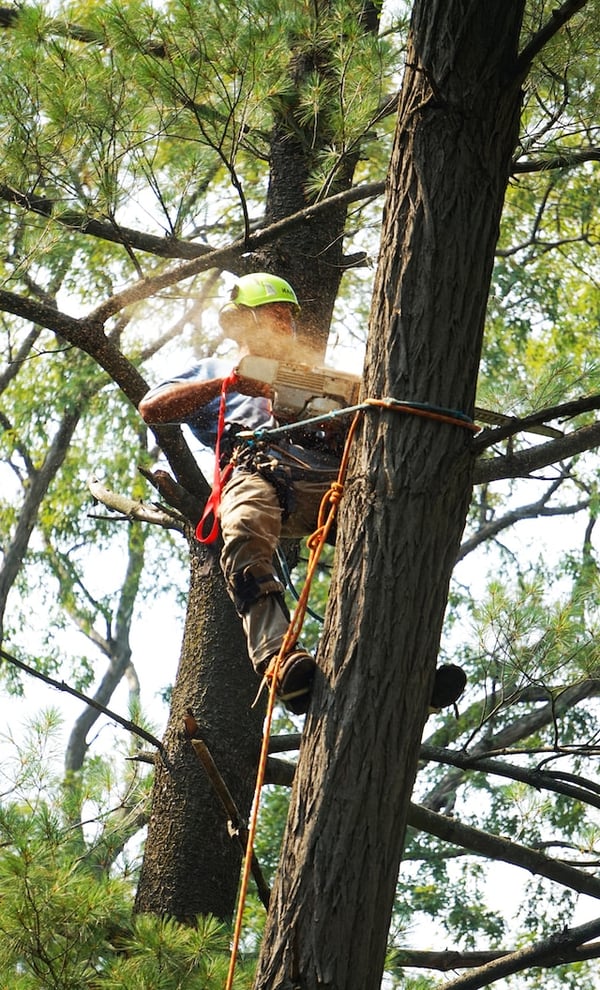Our society heavily relies on the services provided by lone workers who often operate in remote areas, especially in utility, power, and gas sectors critical to infrastructure. The safety of these lone workers poses a unique challenge for operations managers due to their isolated nature. In this blog post, we will explore five challenges faced by operations managers in ensuring lone worker safety and discuss effective solutions. Additionally, we have developed a comprehensive checklist for lone worker safety, which is available for FREE download.
- No Connection to the Outside World
- Unable to Monitor Location
- Not Prepared for Extended Periods in Remote Locations
- Rugged Terrain
- Inadequate Emergency Risk Preparation
- Conclusion
.jpeg?width=600&height=338&name=foresty-tracplus%20(1).jpeg)
Challenge 1-No Connection to the Outside World
While this may seem obvious, and overstated, perhaps the biggest issue faced by lone workers is their isolation from the outside world. Many lone workers tend to find themselves in uninhabited, remote locations that often don’t have cellular reception. Combine this isolation with potentially hazardous working conditions and the end result can be a particular stressful type of isolation for workers.
Without a reliable, tested way of staying connected to the outside world, many lone workers often struggle from mental health issues associated with isolation and stress. This is often compounded by the increased risks associated with their role and isolation. In our study with ground control last year, we found that nearly 20% of lone workers have had difficulty getting help after being in an accident. With 53 million lone workers across the US, Canada and Europe, that equates to potentially 10.6 million people who have had difficulty communicating in times of crisis.
In the case of remote workers it falls to the operations manager, or someone of a similar role, to ensure that their lone workers don’t feel isolated in the field. While there is no way you can completely ensure your workers aren’t isolated, you can make sure to take every precaution to try and prevent this.
A first, easy step to ensure your workers aren’t isolated is giving them a way to connect to the outside world. Having access to a communications device that not only works in cellular areas but also outside of those areas through satellite connectivity will mean your workers have a direct line of communication no matter what their circumstances. In potentially unavoidable times of incident satellite communications will make sure that unlike the 20% of lone workers we identified, your staff won’t have any difficulty getting in contact.
Challenge 2-Unable to Monitor Location
The issues previously mentioned can often be compounded by uncertainties about where a lone worker may exactly be. Quite often when they are out of cellular reception, they are also out of tracking range for operations managers as well. While being able to directly communicate outside of cellular reception is crucial to lone worker safety, you need to know where they are too.
If an incident were to happen and a lone worker reported back to their operations manager, knowing their location is still a critical aspect of their survival. Many times lone workers have to cover huge distances in remote landscapes. This can result in search and rescue parties having to cover huge areas in potentially rugged areas that make it all the more difficult. Combine this with high stakes circumstances that require fast, immediate responses and the end result can be disastrous in the wrong situation.
In order to ensure lone worker safety, having a tracking option that is capable of satellite tracking is critical. Having a tracking device capable of monitoring a workers location, no matter where they are is critical to operational safety and cannot be overlooked.

Challenge 3 -Not Prepared for Extended Periods in Remote Locations
Sometimes due to the nature of the job, or uncontrollable events, workers have to spend extended periods of time in remote locations. When this happens keeping in communication with them and being able to track their locations become even more crucial. During an extended period in remote locations a number of things could go wrong from an animal attack, slip or fall to illness and disease. Because of this it is important to know where your worker is and make sure you can contact them whenever needed over this entire period, however long that may be.
Because of this, making sure that lone workers have the supplies, equipment and knowledge necessary to survive for extended periods in remote locations is another critical aspect of lone work. Preparation is key forever and always.
It is also important to ensure that whatever communication and tracking solution they have been provided with is capable of lasting for that period. If it were to run out of charge during an extended period of isolation then the previously mentioned issues will come back in full force, threatening the safety of the worker.
Operations managers should always look to equip their workers with a device capable of lasting extended periods without access to electricity. The amount of time you may require your device to stay active without charge will vary from operator to operator but as a general rule, the longer the better.
Challenge 4-Rugged Terrain
With remote locations, comes remote terrain. Lone workers generally encounter a distinct lack of urban infrastructure which leads to them being in rugged terrain when on the job. While this is not in itself necessarily a direct issue to the workers ability to complete whatever job they may be on, rugged terrain can often be a catalyst for unforeseen issues.
Whether a slip causes a pathway to be wiped out, unforeseen weather conditions result in flooding or the terrain is simply just difficult to traverse in the first place, it’s extremely important that the equipment lone workers are fitted with is able to handle it. If their equipment is unable to handle the stress of rugged terrain and breaks down or fails at a critical time, lone workers can be left in the lurch without critical equipment.
Because of this the durability, toughness and longevity of equipment should be at the top of an operation manager's considerations when equipping their lone workers. A lone workers equipment should be able to withstand any rugged terrain so anybody can always have faith in its operability. In that operability through rough terrain lies the key to ensuring that lone workers are always as safe as they can be even when they are on their own, miles from any other person.
Challenge 5-Inadequate Emergency Risk Preparation
The previous four challenges have all been specific, outlining specific problems that can be solved by specific solutions. But none of that means anything if you are not adequately prepared in the event of an emergency. Having a solid emergency plan in place is by far the most critical thing any operations manager can do to ensure their lone workers are as safe as they can be.
Making sure lone workers are fully equipped with everything they need to survive, but also know how to use all that equipment and what processes to follow is the key to lone worker safety. All operations managers should aim to have strict check in times in place where they communicate to lone workers and ping their location. For some operations having multiple check-ins a day is necessary. This way, if the worker does not check in, the operations manager can figure out something is wrong and instantly dispatch emergency services.
Having strict processes for what a lone worker should do in the case of an emergency is also important. For most scenarios if there is an incident that requires immediate evacuation for whatever reason, the worker should activate their emergency beacon and wait for help to come. Trying to make their own way back after potentially injuring themselves will only lead to confusion for search and rescue teams.
Every situation is different and it is up to the operations manager to evaluate their lone workers situation in order to establish a detailed, foolproof emergency plan. Ensure all aspects of the situation are evaluated and build a detailed plan around that. Without established plans and processes the margin for error begins to increase in a context where it must be kept as low as possible.
-1.jpeg?width=600&height=400&name=heri-susilo-4qBWeLwg1_s-unsplash%20(1)-1.jpeg)
Conclusion
Overall, while it may be difficult to ensure the safety of lone workers in the field, it is not impossible. Operations managers should always strive to ensure that their lone workers have the best equipment and training, so that they are ready for any situation.
To help with this TracPlus has developed an in depth checklist covering key items every lone worker should be equipped with at minimum in order to ensure their safety when on the job.
